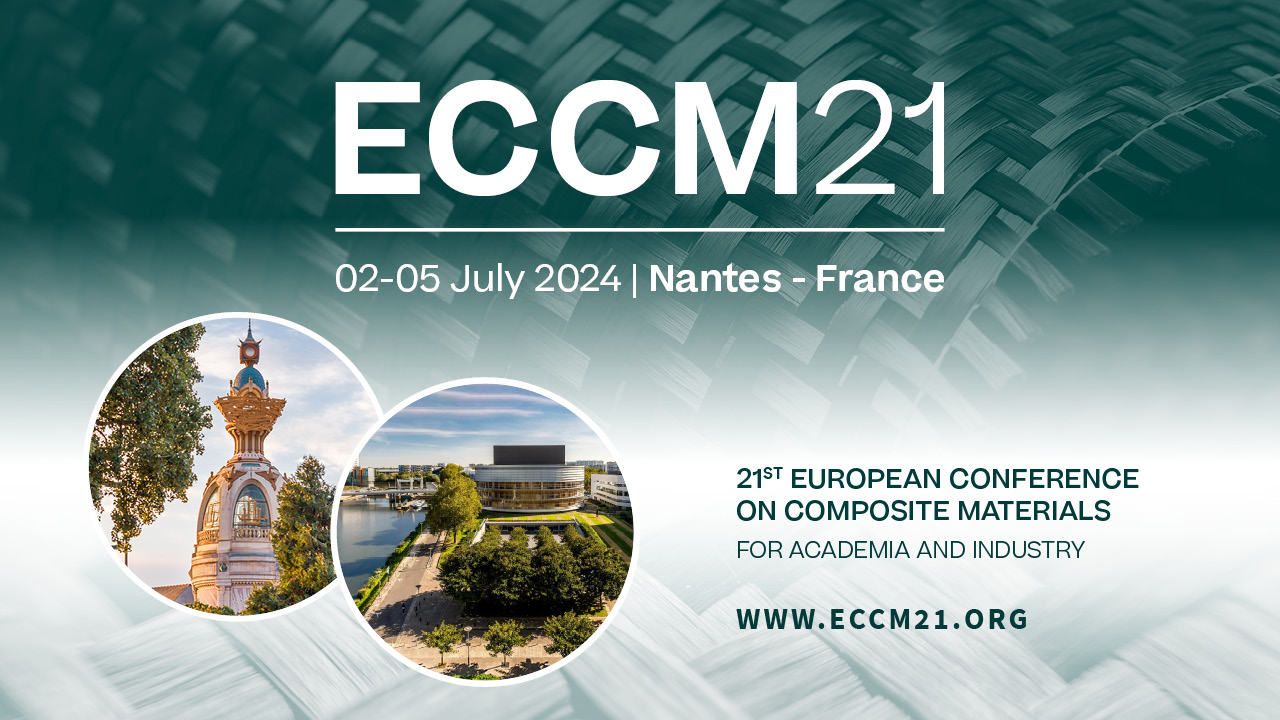Introducing a laser spot control and positioning method for Laser-assisted AFP. Application to the determination of the heating law of a thermoplastic carbon fibre prepreg.
Topic(s) : Manufacturing
Co-authors :
Julien MOOTHOO (FRANCE)Abstract :
Recent advancements in Automated Fibre Placement (AFP) machines have led to the use of infrared (IR) diode lasers as the heat source, offering a promising potential for the mass production of complex-shape high-performance carbon fibre reinforced thermoplastic composites. This shift instigates intensive research into modeling the interaction between the laser and material during the AFP process, aiming to comprehend the temperature field near the lay-up interface and to reconstruct the thermal history of the laid-up material - which is challenging to capture through onboard measurement systems like IR cameras.
Existing models take into account the geometry and the configuration parameters of the IR laser across the lay-up interface (spot size, incident angle, and distribution between incoming tape and substrate) to compute the temperature field during lay-up. However, validating these models by replicating the laser’s configuration on an AFP machine or directly measuring it poses significant challenges.
This paper introduces an innovative methodology for controlling or measuring the laser’s configuration around the lay-up interface nip-point or setting up a specific configuration at the interface nip-point. The proposed solution involves substituting the compaction roller with an articulated device featuring a projection screen at its end. Precisely positioning this device geometrically determines the screen’s location in relation to referenced elements on the AFP machine. Laser shots using the pilot laser, are directed at the projection screen. A camera, placed opposite to the screen, analyses the laser spot’s projection using a specific image processing code, deducing the position, orientation, and spatial distribution of the laser spot across a virtual nip-point. The virtual nip-point is calculated based on roller hardness and compaction force, referring to databases available in the literature [1, 2].
Applying this methodology, an analytical thermal model proposed by Di Francesco et al. [3] is used to characterise a thermoplastic carbon fiber-reinforced prepreg during AFP. The empirical determination of the material coefficients through this approach facilitates model validation by testing various lay-up configurations (laser setup and compaction roller). The use of the model is further extended to determine the laser power law for lay-up on heated mould surfaces. The results obtained are analysed and discussed contributing valuable insights to the field.
Existing models take into account the geometry and the configuration parameters of the IR laser across the lay-up interface (spot size, incident angle, and distribution between incoming tape and substrate) to compute the temperature field during lay-up. However, validating these models by replicating the laser’s configuration on an AFP machine or directly measuring it poses significant challenges.
This paper introduces an innovative methodology for controlling or measuring the laser’s configuration around the lay-up interface nip-point or setting up a specific configuration at the interface nip-point. The proposed solution involves substituting the compaction roller with an articulated device featuring a projection screen at its end. Precisely positioning this device geometrically determines the screen’s location in relation to referenced elements on the AFP machine. Laser shots using the pilot laser, are directed at the projection screen. A camera, placed opposite to the screen, analyses the laser spot’s projection using a specific image processing code, deducing the position, orientation, and spatial distribution of the laser spot across a virtual nip-point. The virtual nip-point is calculated based on roller hardness and compaction force, referring to databases available in the literature [1, 2].
Applying this methodology, an analytical thermal model proposed by Di Francesco et al. [3] is used to characterise a thermoplastic carbon fiber-reinforced prepreg during AFP. The empirical determination of the material coefficients through this approach facilitates model validation by testing various lay-up configurations (laser setup and compaction roller). The use of the model is further extended to determine the laser power law for lay-up on heated mould surfaces. The results obtained are analysed and discussed contributing valuable insights to the field.

